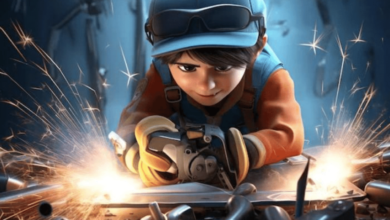Essence of Huck Finn: A Deep Dive into Google Images Huckleberry Finn Illustrations Corncob [Pipe

In Mark Twain’s seminal work, The Adventures of Huckleberry Finn, the corncob pipe is not merely a simple smoking tool but a profound symbol of freedom, rebellion, and the protagonist’s deep connection with nature. This article explores the diverse range of artistic interpretations available through Google Images, showcasing how different illustrators have captured the essence of Huckleberry Finn and his iconic corncob pipe.
Introduction to Huck Finn and the Corncob Pipe
Huckleberry Finn, the young protagonist of Mark Twain’s novel, is often depicted with a corncob pipe, a detail that might seem minor but carries significant symbolic weight. The pipe is emblematic of Huck’s laid-back and rebellious nature, setting him apart from the societal norms of his time. A visual survey through Google Images reveals a tapestry of illustrations, each adding a unique layer to our understanding of this classic literary figure.
Artistic Interpretations of Huck and His Pipe
Through Google Images, one can explore various artistic renditions that highlight the corncob pipe’s significance. Early illustrations by E.W. Kemble, who worked closely with Twain, show a young Huck in rugged attire, the pipe ever-present, symbolizing his rustic, adventurous spirit. Modern artists, however, often reimagine Huck in ways that resonate with current social themes, using the pipe to symbolize issues of freedom and identity.
Symbolism and Its Evolution in Illustrations
The corncob pipe serves multiple symbolic purposes: it represents Huck’s simplicity and resourcefulness and is a badge of independence. Over the decades, the interpretation of this pipe has evolved. Initially a sign of Huck’s bond with the natural world and his carefree lifestyle, its meaning has shifted in modern illustrations, reflecting contemporary concerns about smoking and its implications.
The Corncob Pipe as a Cultural Icon
Beyond its role in the novel, the corncob pipe has transcended literary boundaries to become a cultural icon. It commonly occurs in numerous types of media and merchandise, solidifying Huck’s image as an archetypal American hero. This aspect is particularly evident in film adaptations and popular culture, where Huck’s image continues to inspire a sense of adventure and freedom.
Educational Use of Huck Finn Illustrations
In educational settings, illustrations of Huck Finn, particularly those featuring the corncob pipe, help students visualize and better understand the novel’s historical context and thematic depth. These images bridge readers to the era’s cultural and social dynamics and help them discuss the novel’s enduring themes of race, morality, and societal conflict.
The Role of Google Images in Literary Analysis
Google Images is an invaluable resource for scholars and enthusiasts. It provides access to various illustrations depicting Huck Finn from various artistic periods. This digital gallery enhances the enjoyment of the text and offers multiple interpretations that can lead to a deeper understanding and appreciation of Twain’s work.
Conclusion: The Lasting Impact of Huck’s Corncob Pipe
The corncob pipe, as depicted in countless illustrations of Huckleberry Finn, continues to be a powerful symbol of the novel’s themes and Huck’s character. It reminds us of the simplicity, freedom, and adventure that Huck embodies. As we explore these images, we learn how a simple object can hold profound symbolic significance, echoing the timeless appeal of Twain’s writing.
FAQs: Google Images Huckleberry Finn Illustrations Corncob [Pipe
Why is Huckleberry Finn often depicted with a corncob pipe in illustrations?
Huckleberry Finn is frequently depicted with a corncob pipe because it symbolizes his free spirit, independence, and connection to a simpler, rural lifestyle. The pipe is an iconic element distinguishing Huck from the novel’s more conventional and rule-abiding characters.
Did Mark Twain specifically mention Huck smoking a corncob pipe in the novel?
While Mark Twain never explicitly states that Huck smokes a corncob pipe in The Adventures of Huckleberry Finn, the illustrations by early artists, like E.W. Kemble, added this detail to emphasize Huck’s rustic nature and carefree attitude. The image of Huck with a pipe has since become an enduring part of his character’s depiction.
How have modern artists reimagined Huck Finn and his corncob pipe?
Modern artists often reimagine Huck Finn in ways that reflect contemporary social issues. The corncob pipe can represent freedom, rebellion, and even a critique of societal norms. Some recent interpretations have reduced the prominence of the pipe due to changing attitudes towards smoking, focusing instead on Huck’s adventurous and free-spirited personality.
What does the corncob pipe symbolize in Huck Finn’s character?
The corncob pipe symbolizes Huck’s independence, resourcefulness, and connection to nature. It also marks his rejection of social norms and preference for a life of freedom over the constraints of civilization.
How have illustrations of Huck Finn evolved?
Illustrations of Huck Finn have evolved significantly over time. Early illustrations focused on capturing Huck’s ruggedness and adventurous spirit, often depicting him with a corncob pipe to highlight these traits. In more recent depictions, the portrayal of Huck has adapted to modern sensibilities, reflecting contemporary views on issues like freedom, identity, and even the health implications of smoking.
You May Also Read: The Legacy of 4 Oct 1929 Jacob Crause Obituary: A Reflection on Community and Character




